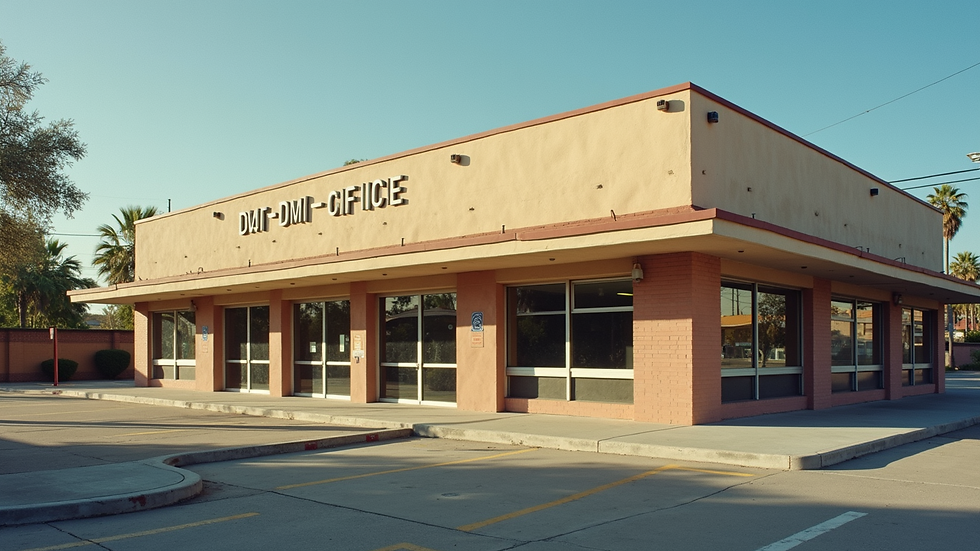Obtaining a Commercial Driver’s License (CDL) in Texas
- Mar Hargrove
- Aug 6
- 4 min read
Updated: Sep 4
Starting your journey to become a commercial truck driver is an exciting step toward a rewarding career. Obtaining a Commercial Driver’s License (CDL) in Texas opens doors to many job opportunities in transportation and logistics. However, the process can seem overwhelming if you don’t know where to begin. This guide will walk you through the essential information you need to start your CDL journey confidently.
Understanding the Importance of CDL Training
Before you can hit the road as a professional truck driver, you need to complete proper training. CDL training is designed to teach you the skills and knowledge required to operate large commercial vehicles safely. This training covers everything from vehicle inspection and basic driving techniques to handling hazardous materials and navigating challenging road conditions.
Enrolling in a reputable cdl training program is crucial. These programs provide hands-on experience with commercial trucks and prepare you for the written and practical exams required to obtain your CDL. Many training schools also offer job placement assistance, which can help you find employment quickly after graduation.

What to Expect in a CDL Training Program
A typical CDL training program combines classroom instruction with behind-the-wheel practice. Here’s what you can expect:
Classroom Learning: You will study topics such as federal and state regulations, vehicle safety, cargo handling, and road signs. This knowledge is essential for passing the written CDL exam.
Driving Practice: You will get hands-on experience driving different types of commercial vehicles, including tractor-trailers, tankers, and flatbeds. Instructors will guide you through maneuvers like backing up, turning, and parking.
Pre-Trip Inspections: Learning how to perform a thorough vehicle inspection is a critical part of the training. This ensures your truck is safe to operate and helps prevent accidents.
Skills Test Preparation: The program will prepare you for the CDL skills test, which includes a pre-trip inspection, basic vehicle control, and an on-road driving test.
Many programs offer flexible schedules, including full-time and part-time options, to accommodate your needs. Choosing a program with experienced instructors and modern equipment will enhance your learning experience.

How much does it cost to get your CDL?
If you are planning to get your CDL, understanding the costs involved is important for budgeting your training and licensing expenses. The total cost can vary depending on the training school, the type of CDL you want, and additional endorsements you may need.
Training Program Fees: Most CDL training programs in Texas range from $3,000 to $7,000. This fee usually covers classroom instruction, driving practice, and sometimes the cost of the CDL permit test.
Permit and License Fees: The Texas Department of Motor Vehicles (DMV) charges fees for the CDL permit and the actual license. Permit fees are around $35, and the CDL license fee is approximately $91.
Endorsement Fees: If you want endorsements such as hazardous materials (HazMat), tanker, or passenger transport, expect to pay additional fees for testing and background checks.
Additional Costs: You may also need to budget for medical exams, drug tests, and study materials.
Financial aid, scholarships, or employer-sponsored training programs may be available to help offset these costs. It’s a good idea to research and compare different training providers to find the best value for your investment.

Steps to Obtain Your CDL License
The process of getting your CDL involves several key steps. Here’s a clear roadmap to guide you:
Meet Basic Requirements: You must be at least 18 years old to drive within your state and 21 to drive interstate. You also need a valid driver’s license and a clean driving record.
Get a CDL Permit: Pass the written knowledge test at your local DMV to obtain a CDL permit. This allows you to practice driving with a licensed CDL holder.
Complete CDL Training: Enroll in a certified CDL training program to gain the skills and knowledge needed to pass the skills test.
Pass the Skills Test: The skills test includes a pre-trip inspection, basic vehicle control, and an on-road driving exam.
Apply for Your CDL: Submit your test results and application to the DMV to receive your CDL license.
Consider Endorsements: Depending on your career goals, you may want to add endorsements for specialized driving jobs.
Following these steps carefully will help you avoid delays and ensure you are fully prepared for a successful trucking career.
Tips for Success in Your CDL Journey
Starting your CDL journey can be challenging, but with the right approach, you can succeed. Here are some practical tips:
Choose the Right Training Program: Look for programs with good reviews, experienced instructors, and modern equipment. A quality program will prepare you well for the real world.
Practice Regularly: Use your permit period to practice driving as much as possible under supervision. The more you practice, the more confident you will become.
Study the CDL Manual: The CDL manual contains all the information you need for the written test. Study it thoroughly and take practice tests online.
Stay Healthy: Driving a commercial vehicle requires physical and mental stamina. Maintain a healthy lifestyle and get regular medical checkups.
Network with Other Drivers: Join online forums or local trucking groups to learn from experienced drivers and get advice.
By following these tips, you can make your CDL training more effective and increase your chances of passing the tests on the first try.
Starting your CDL journey is a significant step toward a stable and rewarding career. With the right training, preparation, and mindset, you can achieve your goal of becoming a professional truck driver. Remember to research your options carefully and take advantage of resources like a trusted cdl training program to set yourself up for success. Safe driving!

.png)
.png)




Comments